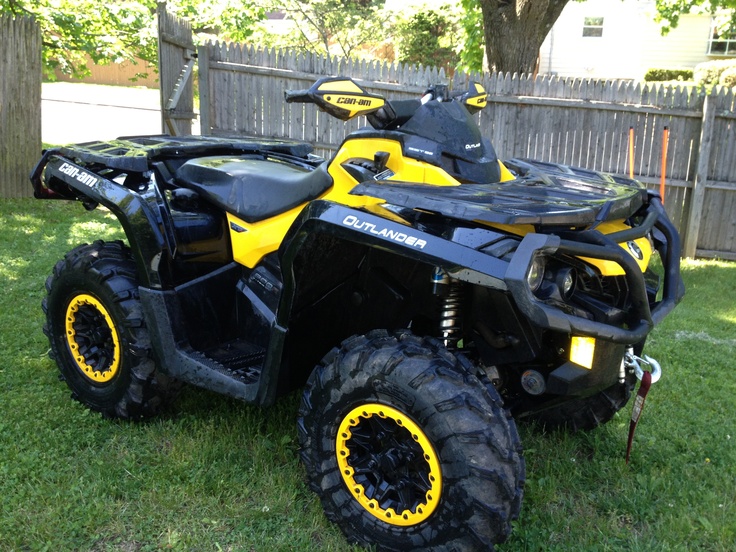| Car Reviews
Two-passenger ATVs are gaining a foothold in the marketplace, and one of those is the Can-Am Outlander Max 800R EFI LTD. The benefit of a "two-up" machine is obvious. Of course, critics will point out that a side-by-side can haul two people, so that market is already covered. Uh, not so fast. The beauty of a two-up ATV like the Outlander is that in addition to comfortably carrying two adults, the machine is shorter in length, narrower in width, and it weighs far less than a side-by-side. Like numbers? We compared the Outlander Max 800R EFI LTD to a couple of popular side-by-sides and found it to be more than 20 inches shorter, about 18 inches narrower, and around 850 pounds lighter on average. Additionally, it has a combined rack capacity of 300 pounds and a maximum towing capacity of 1,300 pounds, so it's on par with popular side-by-sides in that area too.
This ATV is powered by a Rotax 799. 9cc, V-twin, liquid-cooled, SOHC, 8-valve engine. This powerplant is fuel-injected so it kicks out excellent throttle response and performance, no matter what the temperature or altitude. This power is routed through a CVT transmission that features engine braking to help you slow down when descending a hill. The machine is shaft-driven and it has selectable two- and four-wheel drive with a Visco-Lok front differential. This diff constantly monitors front wheel speed and, if it detects one wheel spinning faster than the other, it progressively sends power to the wheel with better traction.
The suspension is independent at all four corners. The front is a double A-arm setup that features forged aluminum upper arms. The rear features a TTI suspension. This setup puts the pivot points of the A-arms ahead of the wheels. Can-Am says that with this system, the wheels pivot up-and-down and never side-to-side like a traditional suspension. This translates to improved traction and handling.
The backbone of the ATV is the SST frame. This continuous-construction steel frame provides a low center of gravity for better handling and more strength than a traditional tubular-construction frame. It also has fewer welds, less material, and less weight.
Other features of the Outlander Max 800R EFI LTD include the convertible rack/seat system, which allows you to go from one-up to two-up riding in seconds; an integrated removable GPS; a multi-function gauge that provides feedback about numerous important machine functions; six-spoke cast-aluminum wheels; 26-inch radial tires; a 3,000 pound-capacity winch; a 5mm HDPE skidplate; and heavy-duty front and rear bumpers.
So there you have it. If those two-passenger side-by-sides have been calling your name, but you've been wanting something smaller, lighter and more agile, but still with a strong work ethic, the Outlander Max 800R EFI LTD may be what's really calling your name.
Specifications
General
Vehicle model: 2009 Can-Am Outlander Max 800R EFI LTD
Base price: $11,949
Color: Radiant Red Metallic, Steel Grey Metallic
Engine
Type: V-twin, liquid-cooled, SOHC, 8-valve
Displacement (cc): 799.9
EFI: 46mm throttle body, 2 Siemens VDO injectors
Drivetrain
Transmission: CVT
Final drive: Shaft
Suspension
Front: Double A-arm
Rear: TTI independent
Brakes
Front: Dual inboard hydraulic discs
Rear: Single inboard hydraulic disc
Tires
Front: 26x8.0x12
Rear: 26x10.0x12
Dimensions/Capacities
Weight (lb): 713
Length (in): 94. 0
0
Width (in): 46.0
Height (in): 45.0
Ground clearance (in): 12.0
Fuel capacity (gal): 5.3
Wheelbase (in): 59.0
Front rack capacity (lb): 100
Rear rack capacity (lb): 200
Towing capacity (lb): 1,300
The success of BRP’s X-Package concept with other models has prompted the addition of such advantages to its popular Outlander line of recreational-utility ATVs.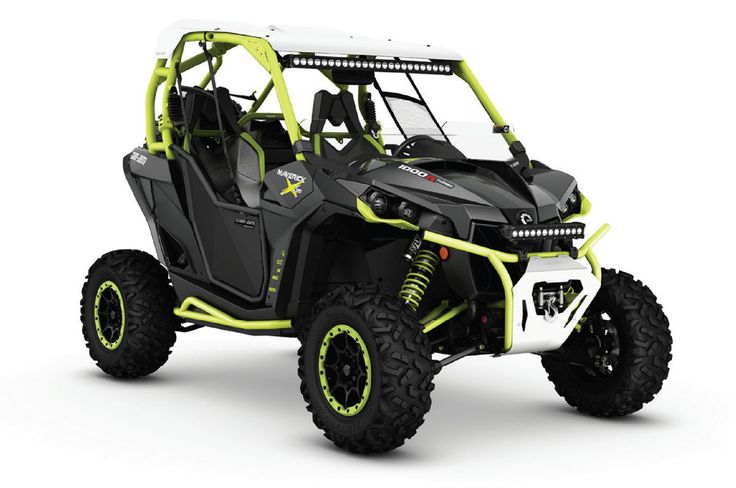 The result is an Outlander, with a knack for racetracks only. This is just the coolest-looking Utility ATV you’ve ever seen! Who would have thought you could turn so many heads with a Utility quad in the box? Lucky for guys with a need for awesomeness in true hard-core trail riding abilities or for all-out racing potential to win trophies; the Outlander 800R X-xc is a reality.
The result is an Outlander, with a knack for racetracks only. This is just the coolest-looking Utility ATV you’ve ever seen! Who would have thought you could turn so many heads with a Utility quad in the box? Lucky for guys with a need for awesomeness in true hard-core trail riding abilities or for all-out racing potential to win trophies; the Outlander 800R X-xc is a reality.
My favourite Can-Am used to be the DS-650. Big power, but with a suspension that permits you to harness all of it. Then the Renegade kind of took its place on top, with a level of power I had for long dreamed about, but never thought I would get, and of course looks to nearly die for. Not long after, the X-xc version of the Renegade totally rocked my world! Now, with all the right add-ons, this beautiful beast could truly perform to its full potential as well, thanks to its most important aspect a: high-performance suspension system. This X packaged Outlander 800R now gets the same treatment, which could very well transform it into a new favourite ride; one with the power to accomplish just about any off-road task.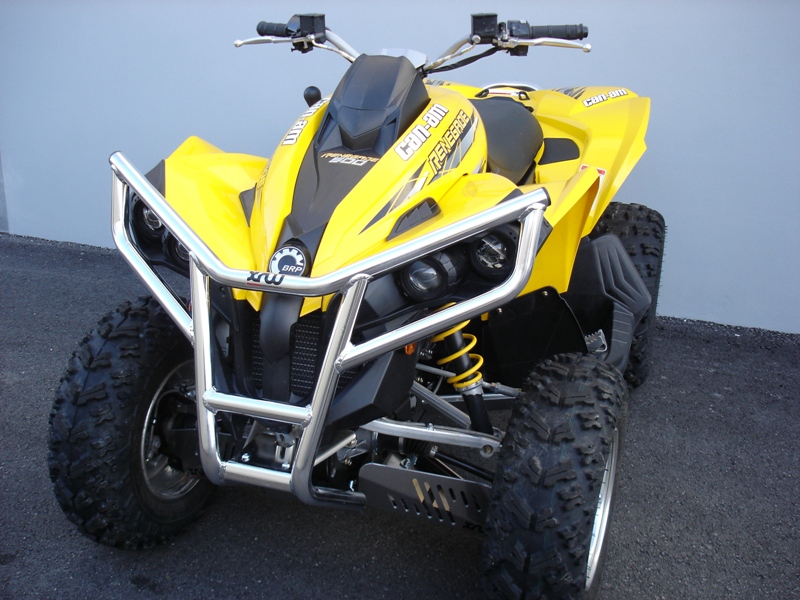
Developed closely with Can-Am racers and race-team partner companies in the Can-Am Grand National Cross Country (GNCC) series, the racing series have been the main sponsor for the past three seasons. The new 2011 Can-Am Outlander 800R X-xc is tagged as a high performance Cross Country ATV. Both the utility class racer and the aggressive trail rider will be pleased with this ride’s race-inspired upgrades, which enable a more confident approach to taking on rough terrain. Hand guards, pre-runner style bumper, skid plate and beadlock wheels give this ride a noticeable amount of extra toughness.
“The expansion of our popular X-Package concept to the Can-Am Outlander 800R is a natural progression, as we bring more to the ATV enthusiast,” said Yves Leduc, Vice President and General Manager of BRP’s North American division.
SOMETHING OR EVERYTHING
If you want all the high-performance features found on the Renegade 800R X-xc, but are still in need of some work-oriented capacities in your ATV, this new Outlander 800 X-xc will satisfy the most demanding user imaginable. Splash protection might seem like a dull detail to point out, but it can also be a big factor for some, who would never have gone for a Renegade, for that reason alone. Truth is, quite a few of us want the best of both worlds: a sporty and fun machine to play with; a weekend trail warrior, as well as a hard-working mule for daily chores. The cool fact is that many of these add-ons also make it a tougher ride. We all know we can’t ever have too much of that with ATVs, whatever the type of usage!
Splash protection might seem like a dull detail to point out, but it can also be a big factor for some, who would never have gone for a Renegade, for that reason alone. Truth is, quite a few of us want the best of both worlds: a sporty and fun machine to play with; a weekend trail warrior, as well as a hard-working mule for daily chores. The cool fact is that many of these add-ons also make it a tougher ride. We all know we can’t ever have too much of that with ATVs, whatever the type of usage!
It is perfectly fine to use this Utility as any other would be: pushing, pulling, carrying just about anything around your property, but with the dual-mode Dynamic Power Steering and advanced, fully adjustable KYB HPG suspension system, and other X package additions, the Outlander loses a lot of its big work ATV look and feel; making room for more intense action possibilities. Those two new elements are pretty major ones as they can affect the control aspects quite considerably, in a positive way.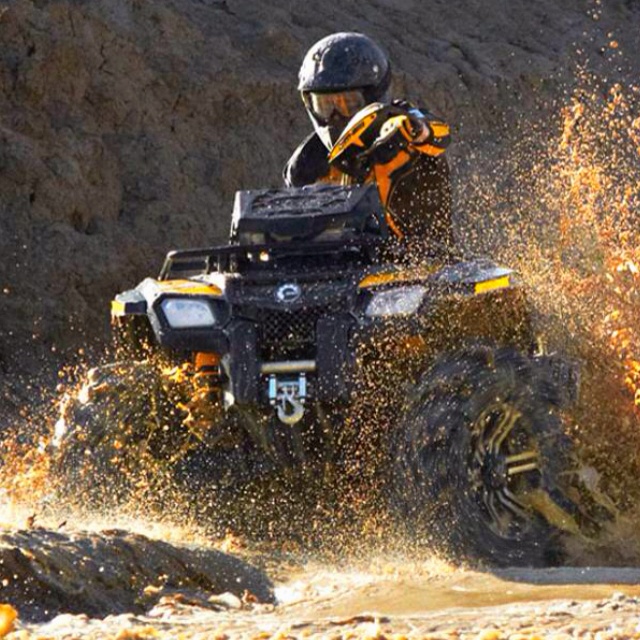 The harder I drive this quad, the more I discovered how better it performed. With this said, it is imperative that its users understand that it is still much larger and heavier than any Sport quad; precautions must be taken when having fun, out there in the middle of nowhere. First and foremost, being well-protected with all the right gear and the all imperatively important helmet; is an absolute must!
The harder I drive this quad, the more I discovered how better it performed. With this said, it is imperative that its users understand that it is still much larger and heavier than any Sport quad; precautions must be taken when having fun, out there in the middle of nowhere. First and foremost, being well-protected with all the right gear and the all imperatively important helmet; is an absolute must!
Furthermore, I personally, wouldn’t leave the racks on it, if they are rarely used and the machine is exposed to extreme rides on a regular basis. As the rear rack is set now, it will surely remind you of its presence when you hike your pace, with an unfriendly tap on the side of your bum. Never ride hard alone and respect rules and laws everywhere. Playing with the abundant acceleration is fine, yet keeping the gas on for longer than just a few seconds with such a powerful machine is never a good idea, as it will be enough time to climb way higher than the usual trail speed limit. In addition, one has to gradually get acquainted with this mighty Outlander’s new abilities, new feel, and more importantly, not to be fooled by its much improved ease of use. At the “Max” setting, the power steering has a tendency to make the rider forget that he is using a very large machine. It will need much more distance to come to a stop, and react less to a rider’s weight shifting, than on any of the 450 sport quads. This is why I strongly suggest you keep it at the “Min” setting, to keep as much trail feedback as possible, at least in the beginning. This is a very personal thing though, and endurance racers will surely want to use this speed and shock sensitive assistance in steering, as much as possible. Still, I was glad to learn that the 2012 version has an added third mode now, with even less assistance.
In addition, one has to gradually get acquainted with this mighty Outlander’s new abilities, new feel, and more importantly, not to be fooled by its much improved ease of use. At the “Max” setting, the power steering has a tendency to make the rider forget that he is using a very large machine. It will need much more distance to come to a stop, and react less to a rider’s weight shifting, than on any of the 450 sport quads. This is why I strongly suggest you keep it at the “Min” setting, to keep as much trail feedback as possible, at least in the beginning. This is a very personal thing though, and endurance racers will surely want to use this speed and shock sensitive assistance in steering, as much as possible. Still, I was glad to learn that the 2012 version has an added third mode now, with even less assistance.
Like all other DPS (Dynamic Power Steering) equipped Can-Am quads, its Visco-Lok front drive system has a quicker engagement point. Meaning the crisp throttle response can be put to good use, when skipping over a medium-sized fallen tree blocking your path, without really ruining the fun yet logical pace you had locked in for that fun bit of tight trails.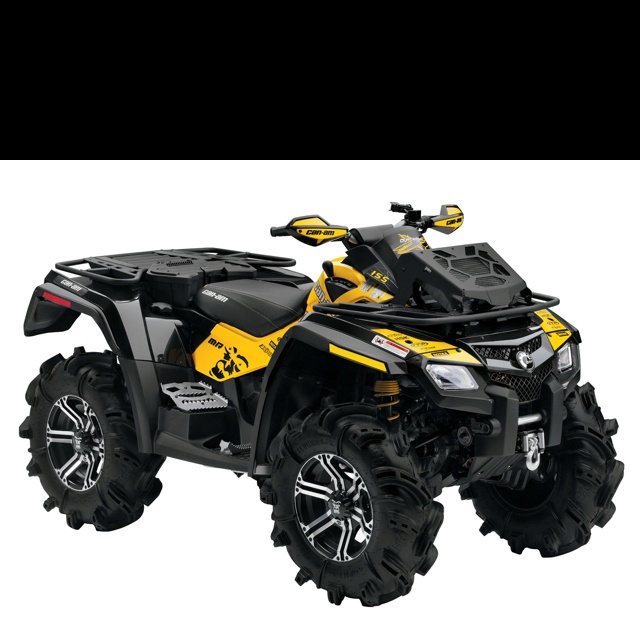 This is a task this ride truly mastered. The ITP Holeshot ATR radial tires also played a key part in achieving this log skip, with ease. There, somewhat ballooned-shape worked in perfect harmony with the front suspension’s high-speed compression, set a little higher than factory, in accordance with my hefty body and tendency to slam the front frequently when rolling down the back of a bump, too much on the rear wheels. What can I say? I get a case of happy thumb and the extra slap on the throttle comes naturally. It feels so great, when perfectly landed flat on all fours, that I’ve made it a habit of rolling over one particularly fun, sharply rounded bump, on a trail we often use. These ITP tires were really good to us all-around; from the fun times we had creating our own trails on our good friend Ben’s property, in thick snow last March, to the hot sand I try and throw up every chance I get, now in July. Mounted on these superb-looking beadlock wheels, they become part of a package that creates much more peace of mind in attacking some really rough stuff on your path.
This is a task this ride truly mastered. The ITP Holeshot ATR radial tires also played a key part in achieving this log skip, with ease. There, somewhat ballooned-shape worked in perfect harmony with the front suspension’s high-speed compression, set a little higher than factory, in accordance with my hefty body and tendency to slam the front frequently when rolling down the back of a bump, too much on the rear wheels. What can I say? I get a case of happy thumb and the extra slap on the throttle comes naturally. It feels so great, when perfectly landed flat on all fours, that I’ve made it a habit of rolling over one particularly fun, sharply rounded bump, on a trail we often use. These ITP tires were really good to us all-around; from the fun times we had creating our own trails on our good friend Ben’s property, in thick snow last March, to the hot sand I try and throw up every chance I get, now in July. Mounted on these superb-looking beadlock wheels, they become part of a package that creates much more peace of mind in attacking some really rough stuff on your path.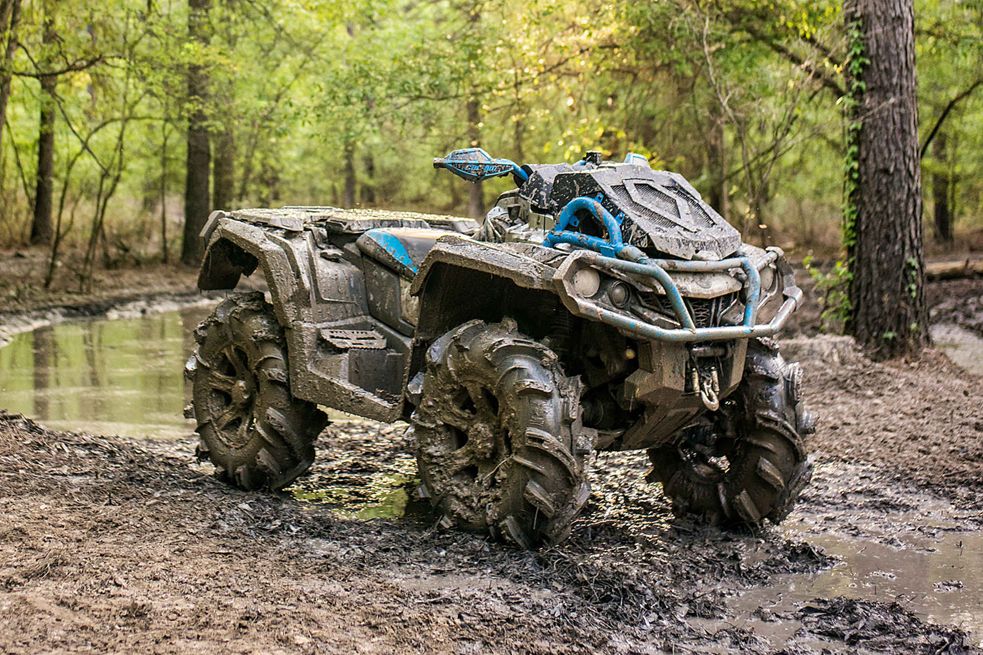
NICELY SUSPENDED
BRP’s team of bold and knowledgeable engineers went exactly in the right direction, when including this very noticeably upgraded suspension on this new form of Cross-Country race monster Outlander. Many experts or racers could tell you that upgrading this element can make a much bigger performance gain, than just adding more power to the engine. In its more basic forms, the Outlander quad actually pushes the limits of how much power a machine can keep under control. The most powerful quad on the market gains much more ability with the addition of this hot-looking, but more importantly, very race- oriented X package. You could just leave your fully adjustable shocks, as they are set at the factory, but that would be a great shame. One must understand that many serious trail riders spend high dollars, just to get this ability of fine tuning the suspension in accordance to rider style, weight and the specific conditions in which the ATV is used.
The Low and High speed compression settings might sound like complicated science to some, but it doesn’t have to be. If the user takes his or her time and only simply performs small changes with only one adjustment at a time, they can get a true feel of how they each affect their ride. There is an order to respect, though. Ride height will be a crucial element to start with, which is adjusted with the threaded pre-load adjustments on the springs. Next, is the Low speed compression, which can be judged in tight turns and under braking. You want the ride to stay as comfortable as possible with the less tilting effect as possible in turns. This should be practiced on a flat surface at a speed, which is very comfortable for you at first, and then you can repeat the exact same turn many times, only accelerating a little bit more each time, getting a bit closer to the top edge of your comfort zone. It is important to retry the same curve, with only a little bit more speed each time. Try five clicks on the adjustment one way or the other at first, to feel a good difference and decide if you need more or less of it.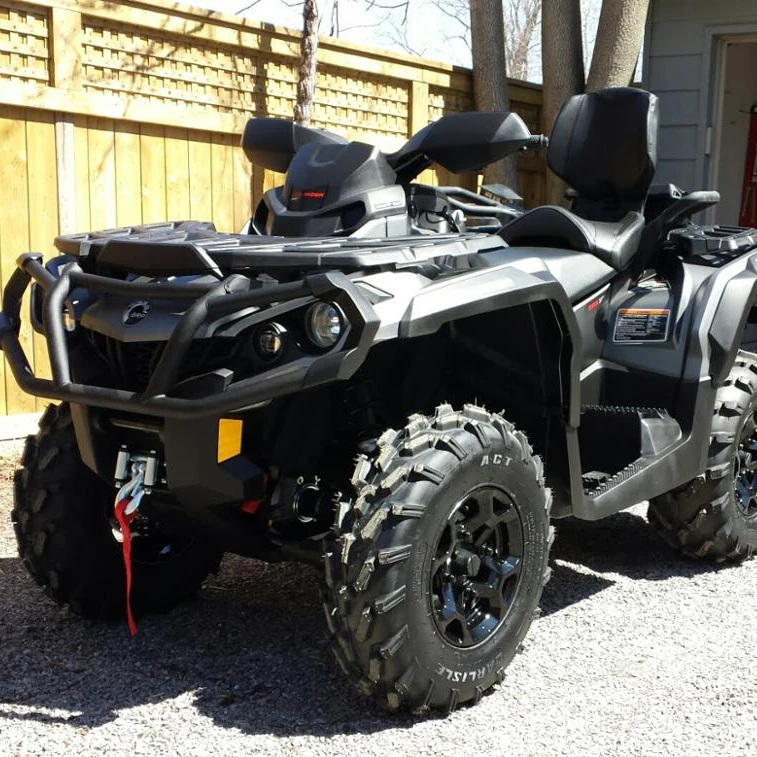 It is also important, to apply the same changes at all four corners at the same time. You can later tweak the front and back separately, if needed. The High speed compression and rebound adjustments should follow, and be tested through sequences of bumps, and upon landing of small jumps. It is important to keep tabs on every click you turn on the dials. Taking notes is very good practice.
It is also important, to apply the same changes at all four corners at the same time. You can later tweak the front and back separately, if needed. The High speed compression and rebound adjustments should follow, and be tested through sequences of bumps, and upon landing of small jumps. It is important to keep tabs on every click you turn on the dials. Taking notes is very good practice.
Expert riders know how much a good suspension system can change a ride for the better. All of that 71-HP of power from the large V-twin Rotax engine, can be a handful at times, but once you’ve dialled in your front KYB HPG aluminum piggyback shocks, and rear KYB HPG remote reservoir shocks with dual-speed compression, rebound and threaded preload adjustments, to your very own sweet spot, this quad will help you better your skill level, all the while making intense manoeuvres safer to execute. It might also be helpful to know that there isn’t such a well-suspended version of the new 2012 Outlander 800R. There is no X-xc version of the newly revised Outlander 800R, or the all-new 1000. You will need to revert back to the Renegade for an X-xc package.
There is no X-xc version of the newly revised Outlander 800R, or the all-new 1000. You will need to revert back to the Renegade for an X-xc package.
FOR THE LOVE OF QUADS
It might seem like I am totally in love with this ride? That’s because I am! For me, on a very personal level, this ride is the ultimate one! With it, come certain advantages that I, as an experienced and more importantly, large rider, can truly appreciate. This does not mean that I would recommend this quad to just any rider. Certain aspects, such as the generous power output, judged to be positive ones for my riding needs, can be considered negative ones for others; like for example new riders just starting out. Would you let your son drive the most powerful car out there, to learn the basics?
At an age when you know they are going to experience certain mishaps, as part of their normal learning curve? There is room for improvement on certain things, which will always be the case, I guess. The shifter can feel sticky at times, heat shielding isn’t all that great, but I wasn’t riding this quad slow enough for that to be a problem for me. The rear brake sticks a bit too much upon release, because of the somewhat too aggressive engine braking. All those are issues that have been solved on the new 2012 800 and 1000 Outlander rides, by the way. Still, the great handling, awesome power and high level of comfort, truly outweigh those small peeves. Not to mention that the only problem encountered, after riding 560 km with this unit, was a burnt fuse that had me lose 4WD capability, and lights for just a few hours of riding.
The shifter can feel sticky at times, heat shielding isn’t all that great, but I wasn’t riding this quad slow enough for that to be a problem for me. The rear brake sticks a bit too much upon release, because of the somewhat too aggressive engine braking. All those are issues that have been solved on the new 2012 800 and 1000 Outlander rides, by the way. Still, the great handling, awesome power and high level of comfort, truly outweigh those small peeves. Not to mention that the only problem encountered, after riding 560 km with this unit, was a burnt fuse that had me lose 4WD capability, and lights for just a few hours of riding.
Looking out the window right now, I see it shining under heavy rain. I can’t believe I am truly feeling sadness in seeing it off. I don’t care if it isn’t mine. It represents all that I have wished for in a quad, during all those long years of riding and I’ve had time to grow much attached. Wow! What a fun test this has been!
For more information on the above mentioned models, please visit the Can-Am Off-Road Website
More from Can-Am on ATV Trail Rider :Can-Am ATV Models – Can-Am UTV Models – Can-Am ATV Reviews – Can-Am UTV Reviews
In the category "A" we regularly acquaint readers with new products from the world of ATVs . .. But this time we will not talk about another four-wheeled creation but about the eternal. About snorkels for ATV. Who does not know, such a refinement can turn any all-terrain vehicle into a submarine.
.. But this time we will not talk about another four-wheeled creation but about the eternal. About snorkels for ATV. Who does not know, such a refinement can turn any all-terrain vehicle into a submarine.
Dmitry Zlenko
Farewell, guarantee!
For all its seeming simplicity at first glance (a kind of complexity: put a pipe on the air filter housing and pull it up), installing snorkels on ATVs is fraught with a lot of nuances. And before deciding on this, we recommend that the ATV owner think hard about whether he needs it? Firstly, if the ATV is freshly bought, then the withdrawal of "breathing tubes" promises to remove it from the warranty. From the point of view of a dealer who provides technical support for an all-terrain vehicle, such a refinement is nothing more than interference with the design and violation of the factory specification of the product. Here it can be objected that, they say, such tuning does not harm, but quite the contrary - it helps to improve the parameters of the technique, because when fording fords, water ingress into the engine and variator is excluded, and air filter pollution is also reduced.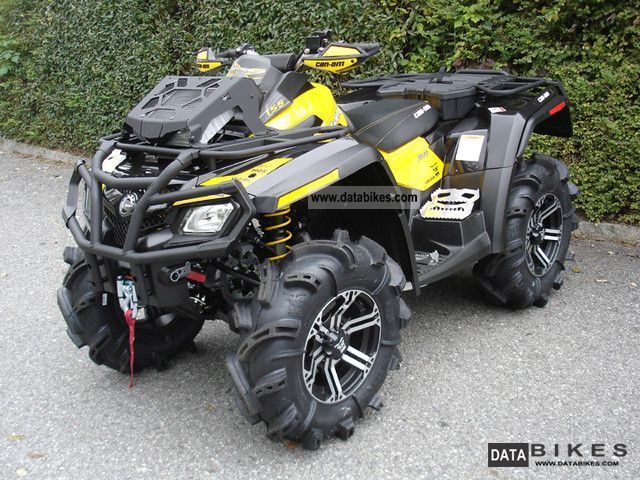 nine0007
nine0007
Fair. But only in part. If, when installing an external air intake, the docking seams were not perfectly sealed, then during the first immersion, water will be in the system, wet the air filter, it, in turn, will become limp, tear and dust will begin to be sucked into the combustion chamber without hindrance. A few kilometers - and thick smoke will pour out of the exhaust pipe of the ATV, which will become an unequivocal indication of the piston bulkhead.
But even if the stem is soldered properly, the motor can be killed due to the wrong diameter of the snorkel. A pipe that is too small in diameter results in the fact that the right amount of air is not supplied to prepare the correct combustible mixture, as a result of which the mixture is too rich. The fuel does not burn completely, soot forms on the spark plug and on the valve seats, and this eventually leads to the fact that, due to soot, the valves will not close tightly and burn out completely. It is believed that for ATVs with an engine capacity of 300 to 500 "cubes" the diameter of the snorkel pipe should be approximately 50 mm, for all-terrain vehicles with an engine capacity of 600 to 800 "cubes" the diameter should be at least 63 mm. nine0007
nine0007
I don't have enough air...
However, even a perfectly matched snorkel diameter is not a guarantee of good ATV performance after tuning. The fact is that when removing the air intake, it is necessary to install a so-called air receiver near the air filter, the volume of which is calculated by the formula: engine cubic capacity multiplied by five. Say, if the engine displacement is 500 cc, then the volume of the installed receiver should be 2.5 liters. This air reservoir is necessary so that when the throttle is pressed sharply, the ATV does not stall due to lack of air, as well as for the stable operation of the “fiery heart” at high speeds. The fact is that at a crankshaft rotation speed of 4000-5000 rpm, the air flow speed in the intake manifold reaches as much as 500-600 km/h. Provided that the length of the "breathing tube" has grown at least 30-40 times compared to the standard dimensions of the air intake, it is not possible to quickly pump the required amount of "oxygen" at such a speed through a narrow tube.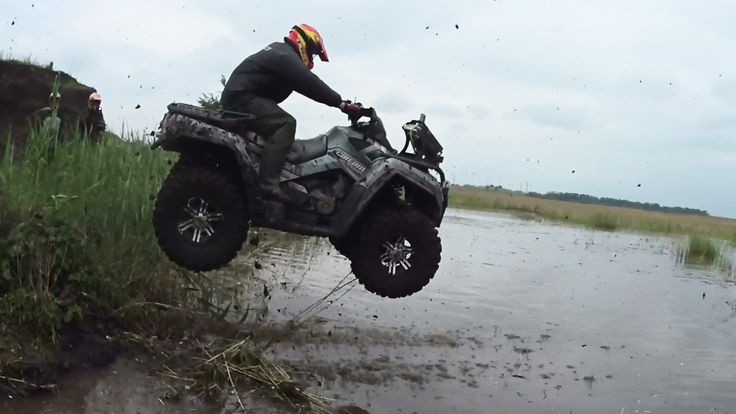 nine0007
nine0007
CVT in danger
Another subtlety of ATV snorkeling is that the air intake is needed not only for the motor, but also for the CVT. Unlike most automotive transmissions (manual and automatic), CVTs are 99 percent of the time on ATVs. And this type of transmission needs good forced cooling, for which manufacturers install cooling inlet and outlet pipes. If you do not snorkel the variator, then water will get into this knot when storming a deep ford, the variator belt slips and the quadric will not go anywhere else. The air intakes of the variator must be made quite large in diameter. The minimum diameter of the snorkel tube must be 55 mm. Ideally - 63 mm. If you make a pipe of a smaller diameter, then on an average 500cc ATV, overheating of the variator with the melting of the variator weights and tearing the belt into flaps will happen after about an hour and a half of active driving. The inlet and outlet snorkel of the CVT cooling system must be of the same diameter - this will provide the unit with the best possible ventilation.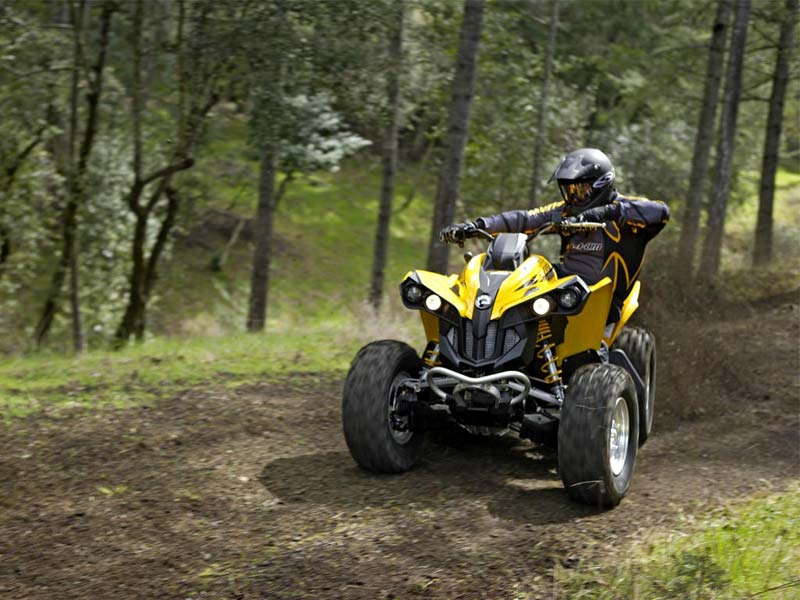 nine0007
nine0007
Off-road psychoanalysis
But not only for the above reasons, sellers remove snorkel quads from the warranty. The presence of an external air intake is like a litmus test, by which you can accurately determine how frostbitten the owner of the ATV is in terms of operation. If there is a snorkel, then the owner of the ATV regularly and with pleasure lets the equipment go all out, almost not sparing it. Under such a rider, not only will the ATV break down, the Soviet tank will beg for mercy! So what's the guarantee? nine0007
Do not dive from the hot
After all, what is the logic: if you have a snorkel, then you can dive into any ford with acceleration. However, do not forget that the quadric is full of oil seals. When the vehicle travels on a dry surface, all the rubber seals of the motor and gearboxes get quite hot. And when the ATV is dipped into cold water at full speed, the seals instantly compress and let the h3O through.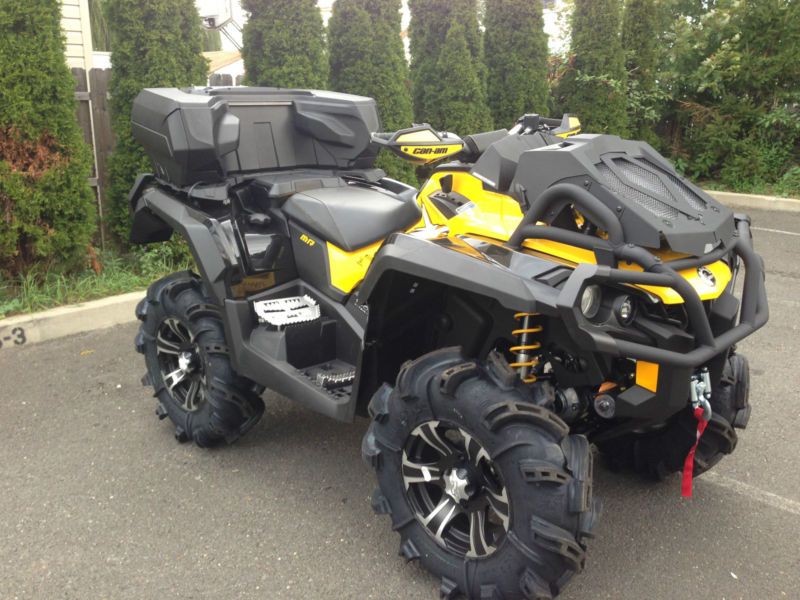 An emulsion is formed, the parts of the gearboxes and the motor will soon become unusable. nine0007
An emulsion is formed, the parts of the gearboxes and the motor will soon become unusable. nine0007
In addition, snorkeling without taking the radiator to the top does not make much sense, since diving into the swamp slurry, we will clog the radiator cells with dirt, which in turn will inevitably lead to overheating of the power unit. So it turns out that seemingly harmless “improvement” entails a bunch of problems.
In connection with all of the above, many have probably uttered the rhetorical question: "to snorkel or not to snorkel - that's the question." If you have a new ATV and you are counting on a warranty, then remote air intakes are definitely not for you. If you don’t believe in a used garage or a free repair under warranty, then snorkels can be quite a useful thing. The only thing is that they need to be installed by competent specialists, coupled with the removal of the radiator. Naturally, it should be remembered that water procedures must be taken measuredly, avoiding sudden cooling of the seals (as we already know, this leads to water getting inside the motor and gearboxes). nine0007
nine0007
Subscribe to the Avtovzglyad channel:
From time to time the quad is acting up and not behaving as you would like. Nothing beautiful lasts forever, right?
One of the most common problems you may encounter is the ATV suddenly pulling to the left or right. nine0007
If you're lucky, your problem may have a simple solution)
Let's take a look at some of the most common causes of ATV pulling to one side, and of course, here's how to get rid of these problems.
The most common problem that causes the ATV to pull to one side is the difference in rolling resistance due to different tire pressures. Also, the problem may be associated with natural wear or damage to various components of the chassis of the ATV and, as a result, a violation of the angle of the wheels. nine0007
nine0007
So how do you determine what is causing problems when riding an ATV?
As you probably already understood, there can be several reasons.
To understand why an ATV wants to pull off the road and dive into a ditch when you really don't want to, you need to do a number of checks.
Although I don't have exact statistics to tell you which malfunction occurs most often, I still recommend that you start with what is easiest to check and fix before spending time and money on more unusual and potentially more complex searches. nine0007
In my experience, the most common cause, and by far the easiest problem to check and fix, is uneven ATV tire pressures.
Let's look at what happens when ATV tires have different pressures.
A flat tire has a larger area of contact with the road surface than a normally inflated wheel, as a result of which the friction force, and hence the rolling resistance force, applied to such a wheel will be higher. The wheel will roll more slowly. The opposite wheel will run ahead and try to turn the ATV around the slow wheel. That is, if the ATV pulls, for example, to the left side, most likely, the fact is that the left wheel is lowered. nine0007
The wheel will roll more slowly. The opposite wheel will run ahead and try to turn the ATV around the slow wheel. That is, if the ATV pulls, for example, to the left side, most likely, the fact is that the left wheel is lowered. nine0007
To solve this problem, you need to equalize the air pressure in the ATV tires. It is best to refer to the operating instructions, which must indicate the required air pressure in the wheels recommended by the manufacturer. The pressure in the wheels installed on the same axle of the ATV must be the same.
At the same time, you should be aware that due to the design features and weight distribution of the ATV, the tire pressure on the front and rear axles may differ. nine0007
Check with a good tire pressure sensor.
Most manufacturers are equipped with ATVs with a set of tools and a sensor for checking air pressure in wheels, such as ATVs Yacota SELA 200 , Yacota SELA 150 , Yacota Cabo 200012, 111111111111111111111111111111111111111111111111111111111111111111111111111111111111111111111111111111111111111111111111111111AL MOTAX 200 , MOTAX GRIZLIK and MOTAX RAPTOR .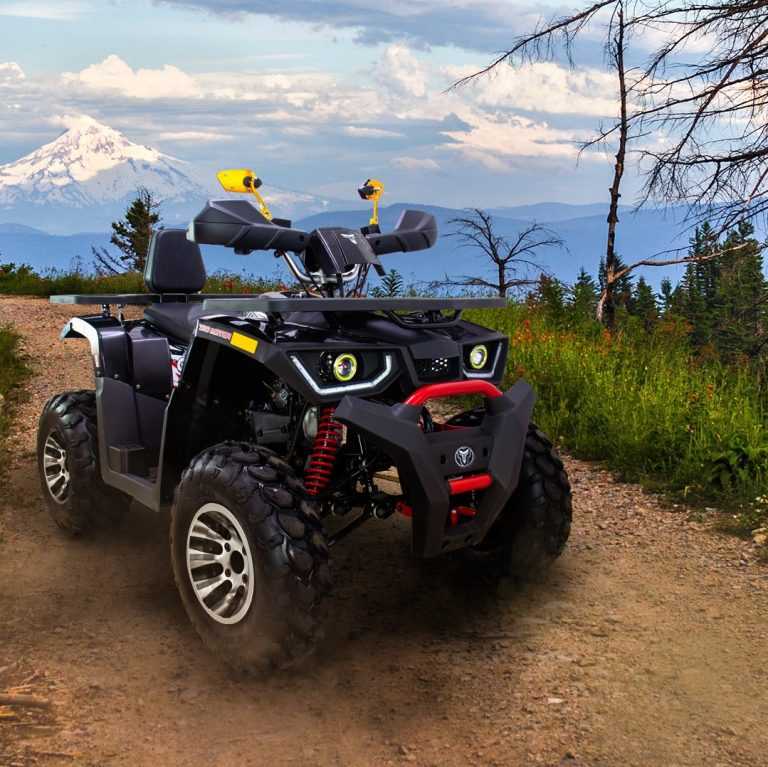
ATVs MOTAX and YACOTA have these sensors in the standard tool kit. If there is no such device in your kit, I recommend that you definitely purchase it. A very slight difference in air pressure in the tires may well be the reason that the ATV pulls to the side when driving in a straight line.
The air pressure should be checked in both front and rear tires. True, uneven pressure in the rear tires, most likely, will not be the reason for the withdrawal of the ATV from a straight path. Different pressure in the rear tires can provoke another malfunction - premature wear of the rear differential, due to the increased load on it. But this is a story for a separate review. nine0007
I always keep this inexpensive instrument in my tool kit, its accuracy is good enough to use.
Also make sure that the maximum tire pressure is not exceeded.
Over time, ATV wheels can wear differently, resulting in the diameter of one wheel being different from the diameter of another wheel. This can also cause the ATV to pull to the side.
This can also cause the ATV to pull to the side.
To check if the front wheel diameters are the same, you can do a simple check: place the ATV on a flat surface and use chalk to make a mark on the sidewall of each front tire at the lowest point. nine0007
Wheels must be pointing straight ahead, gear lever in neutral position. Roll the ATV forward until one of the wheels has made two or three revolutions and the mark you just made is back to the very bottom, to its original position. Look at the mark on the opposite tire. Ideally, it should also be at the very bottom. If this is not the case, the wheel circumferences do not match.
If the reason for the ATV pulling to the side lies in the difference in wheel circumference, then when driving to the right, the right tire should have a smaller circumference, and when driving to the left, the left one. nine0007
The circumference of the wheels can differ not only due to uneven wear, but also due to the difference in air pressure in the tires.
The wheel is like a balloon, the higher the pressure, the larger its diameter and vice versa.
For this operation, you need to lift the ATV, put it steadily on the supports so that all the wheels are in a suspended state.
It is very convenient to use motorcycle stands to lift the ATV. If you do not have them yet, and you plan to service the ATV yourself, I recommend purchasing them. They are relatively inexpensive. Tackles will greatly simplify the ATV maintenance process. nine0007
Check that there is no excessive play in the ATV's suspension and steering joints. Start with the tie rods and steering rack. This operation is more convenient to carry out with an assistant. Have an assistant move the ATV handlebars to the right and left, often and with a small range of motion. And you, in turn, keep your hand on the swivel, which are subject to verification. Check the steering tips and tie rods one by one.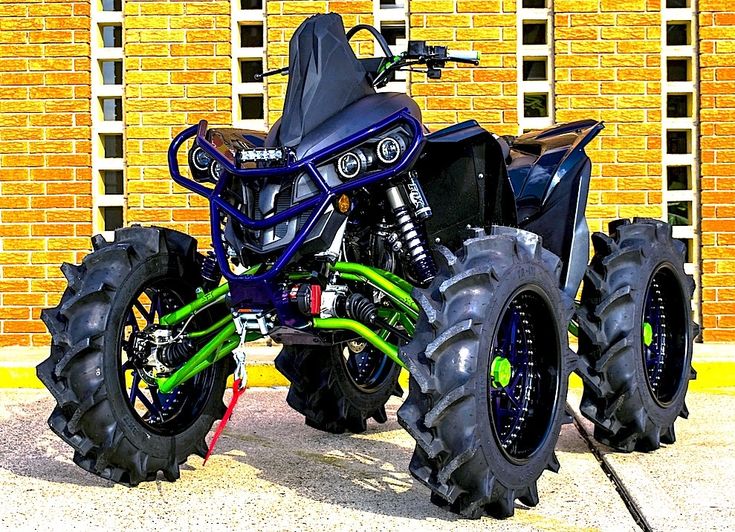 You will feel the excess play in the hinge with your hand. If the ATV steering wheel has excessive play, but the tie rod and steering tip are in order, then the steering rack itself or the steering shaft bushing may have play, which can also be checked by hand. The steering column bushing usually wears out over time. The same goes for the ball joints on the tie rods. nine0007
You will feel the excess play in the hinge with your hand. If the ATV steering wheel has excessive play, but the tie rod and steering tip are in order, then the steering rack itself or the steering shaft bushing may have play, which can also be checked by hand. The steering column bushing usually wears out over time. The same goes for the ball joints on the tie rods. nine0007
Tighten any loose bolts and replace worn parts. Worn parts can break soon, so replacing them won't be a waste of money, even if their wear isn't the reason your ATV pulls to the side.
In addition, the wheel bearings must be checked for excessive play.
To do this, ask an assistant to take the wheel by the hands of the upper and lower parts and shake it, while you check the play in the ball joints and wheel bearings. nine0007
Check how easy the wheels turn. The wheels should rotate freely, without noise and crackling. The presence of noise indicates wear on the hub bearing. And the tight running of the wheel is about bearing wear or souring of the brake pads. As we said, if one of the ATV's wheels is spinning at a slower speed than the other wheel, the ATV will pull towards the slow wheel.
As we said, if one of the ATV's wheels is spinning at a slower speed than the other wheel, the ATV will pull towards the slow wheel.
If necessary, replace the bearings and service the front brake calipers. Sometimes the caliper is easy enough to clean, and sometimes you can’t do without replacing the brake cylinders or the caliper bracket itself. nine0073 Finish with suspension lubrication. The chassis of ATVs of the brands YACOTA , MOTAX , AVANTIS is equipped with special grease fittings through which you can easily lubricate the desired suspension unit. We have already told, in one of the reviews, using the example of a gasoline 125 cc ATV MOTAX T-REX , about the features of maintenance of the ATV suspension. Regular maintenance of your ATV will definitely prolong its life. nine0007
Control check three: check the running gear for geometry violations.
If you use the ATV for active riding or sports, then it is possible that you have bent some part of the suspension on the next jump.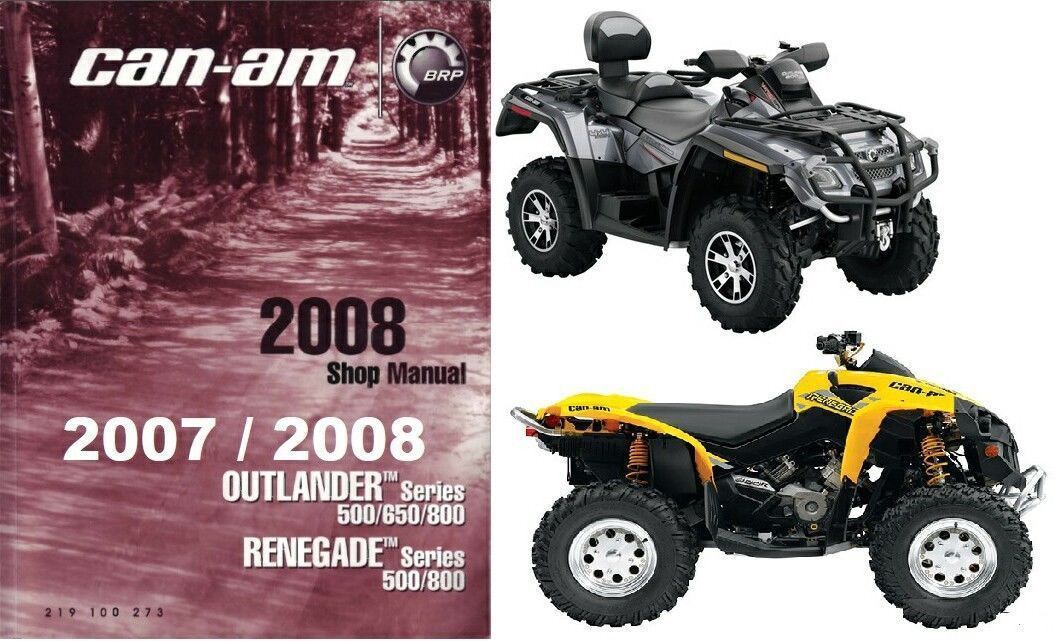 ATV front suspension A-arms are especially prone to damage if you hit a stump or rock while riding. "Fast-growing" trees suddenly appearing in front of the ATV as you drive, a common story!)
ATV front suspension A-arms are especially prone to damage if you hit a stump or rock while riding. "Fast-growing" trees suddenly appearing in front of the ATV as you drive, a common story!)
A-arms are designed to absorb heavy suspension shock and, through their integrity, retain more expensive and hard-to-find ATV parts that are more difficult, more expensive or even impossible to repair, for example, an ATV frame. It is not always easy to see if the suspension arm is bent or not. It happens that the levers do not have a symmetrical shape, because the ATV suspension was originally designed this way by the manufacturer. nine0007
Compare the distance between the axles of the front and rear wheels of the ATV on the right and left sides. If there is a difference, then one of the suspension arms is most likely damaged.
The camber and toe angle can be adjusted by eye yourself, but it is better to contact specialists who have the necessary measuring equipment and data on the required wheel alignment values.